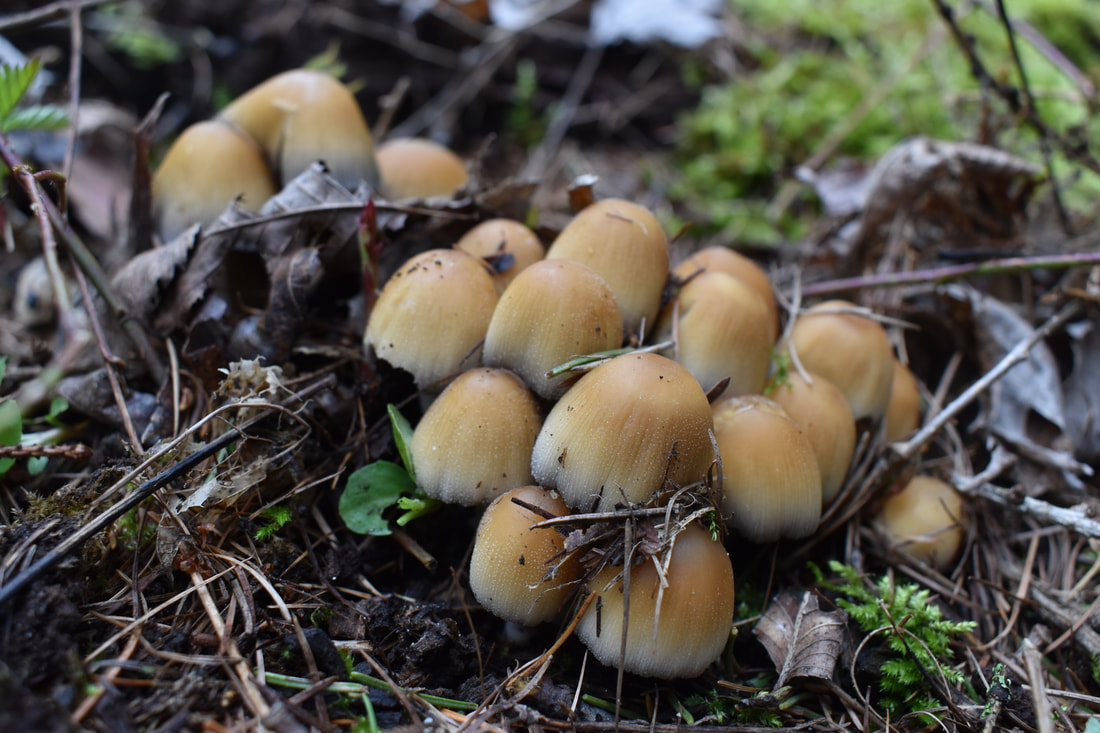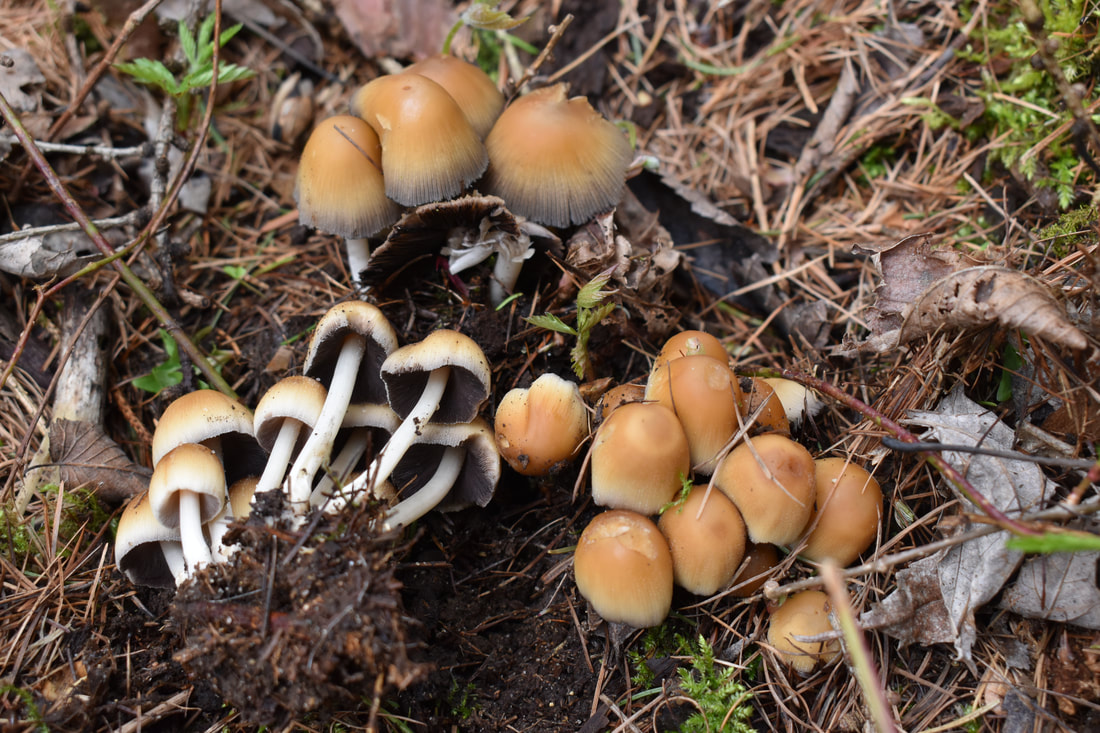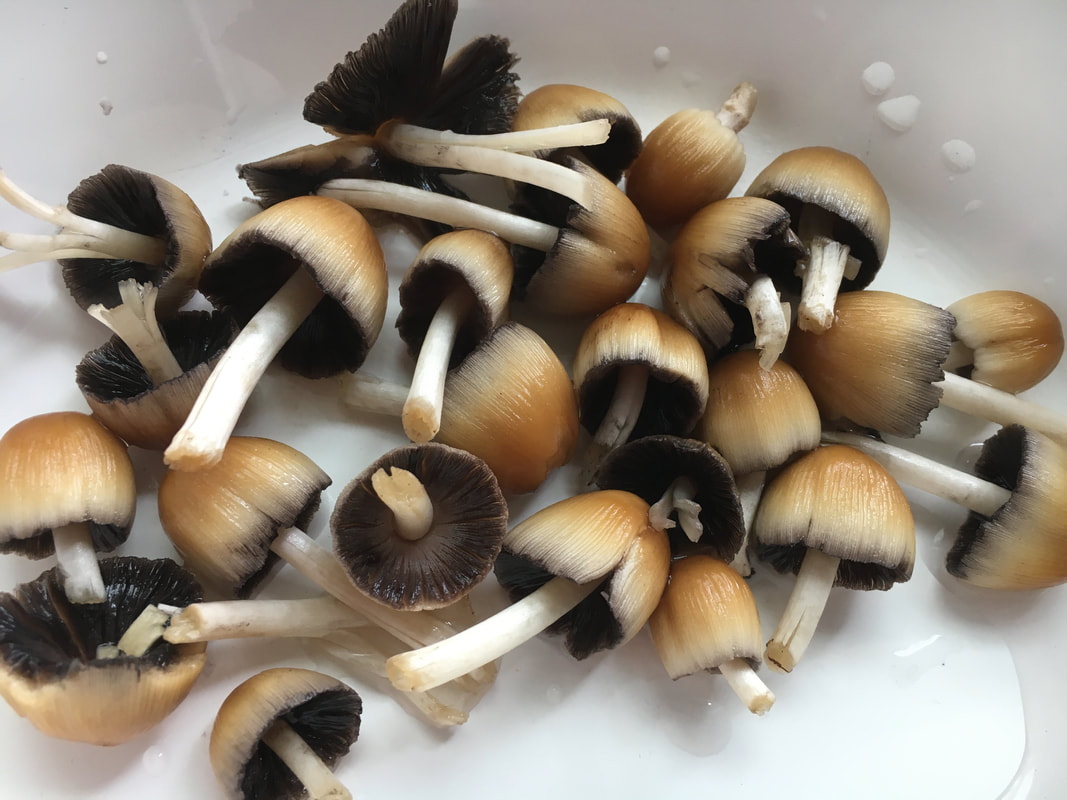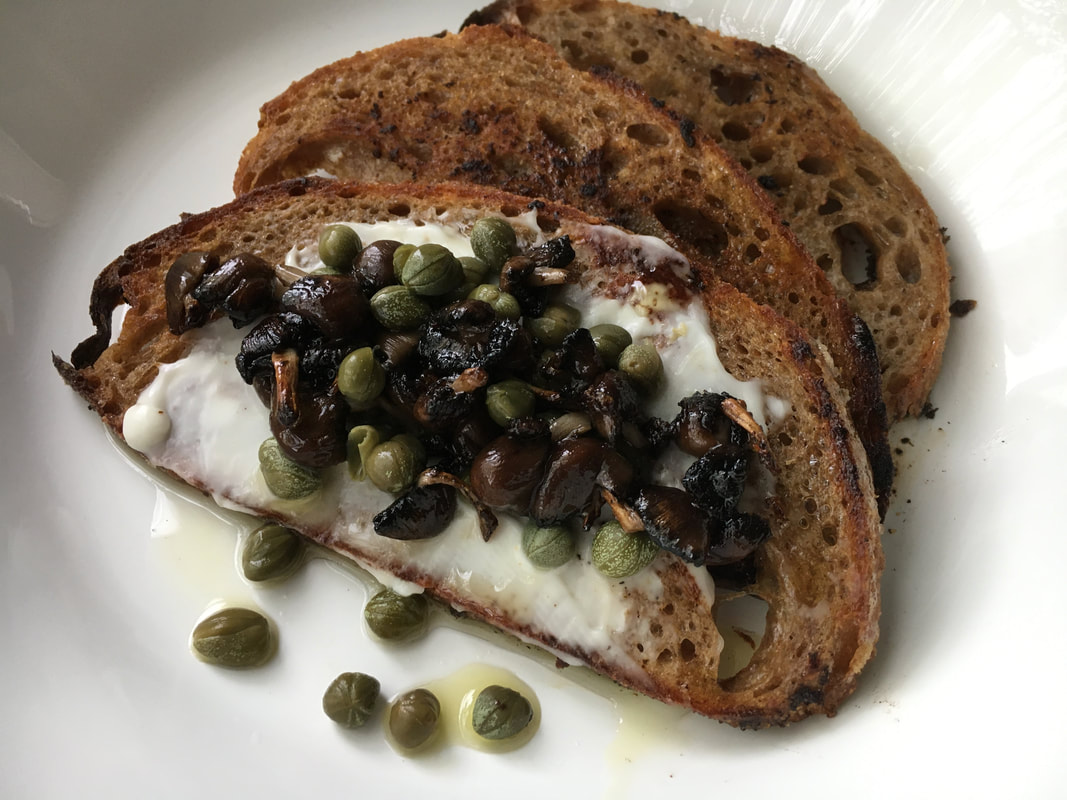|
Mycobank Taxonomy: Fungi, Dikarya, Basidiomycota, Agaricomycotina, Agaricomycetes, Agaricomycetidae, Agaricales, Psathyrellaceae, Coprinellus Coprinellus truncorum (or more commonly referred to as C. micaceus - more about that later) is an inky cap, which means before you know it, the mushroom will enzymatically digest itself in a soppy process called deliquescence. Inky caps are really the milquetoasts of the mushroom world, turning into complete mush soon after fruiting. Deliquescence is much more than feebleness, though. It is a process of spore dispersal that has evolved independently in multiple lineages of mushrooms. Deliquescence starts at the edge of the cap and moves towards the stem. Meanwhile, the spores mature in the same pattern, but one step ahead of the destructive enzymes. As a result, mature spores are always at the edge of the dissolving cap - a perfect position to catch air currents for dispersal. If you are interested in learning more about inky caps and their taxonomy, check out Michael Kuo's page on the topic. Mica cap mushrooms are named as such because their caps are adorned with glistening white speckles reminescent of the mineral mica. However, rain can wash the speckles away, in which case you'll have to use other traits for identification. The speckles are actually remnants of the universal veil that covered the mushroom in its primordial state. According to Michael Kuo, a few different species of mica cap mushrooms are generally referred to as Coprinellus micaceus. In this case, the stem is smooth and the spores are ellipsoid, which suggests this friend is C. truncorum. I often encounter mica cap mushrooms in urban settings but have avoided eating them because of their potential to bioaccumulate heavy metals and other toxins. These ones I found in the woods. Inky caps must be cooked soon after harvesting – probably within two hours or so – to deactivate the gooifying enzymes. I simply pan fried these mushrooms with Miyoko's vegan butter, sprinkled with salt, and served on sourdough toast with vegan mayo and capers. Throughout the web, mica cap mushrooms are dismissed as tasteless, but I have to disagree. In my opinion, they are really quite tasty, like Agaricus bisporus button mushrooms, but maybe even more concentrated in flavor. Charles McIlvaine concurs. On page 378-379 in One Thousand American Fungi, he says "Although small and thin, its clusters soon fill baskets, and it continous growth in some places, from month to month, year to year, makes it one to be depended upon. Stewed for ten minutes it makes a rich, luscious dish." Next time, I'll have to try it his way. Charles McIlvaine's Recipe for Stewed Mushrooms on ToastCut the mushrooms – caps and stems – into pieces of equal size. Place in a covered saucepan. To each pint add one ounce (two level tablespoons) of butter. Enough water will have been retained by the gills after washing to make sufficient liquor. Stew slowly twenty minutes; season to taste with pepper and salt. Place upon toast. To Cook Coprinus (feat. Mrs. S. T. Rorer)In the "Recipes for Cooking and Preparing for the Table" section at the end of One Thousand American Fungi, mica cap mushrooms get a special shoutout. This description below is quoted from Mrs. S. T. Rorer by McIlvaine. In regard to the C. micaceus I find that they are better cooked after the following recipe: Trim the stems, wash the toadstools carefully through several waters, then drain them in a colander. Spread them out in a long baking pan, dust lightly with salt, pepper, put over a few bits of butter, cover with another pan and bake in a moderate oven for twenty-five minutes. Add four tablespoonfuls of cream, bring to boiling point; dish on toast. The C. atramentarius may be cooked in precisely the same manner. I find that all these inky mushrooms are better cooked in a very slow heat in the oven, and they must be covered or they lose their flavor. SpecimenACD0271, Mushroom Observer #409477; 11 May 2020; Washtenaw Co., MI, USA; leg. Alden C. Dirks, det. Alden C. Dirks; GenBank #MZ919215 (ITS rDNA), MICH 352242. Online Resources
1 Comment
Luke Smithson
5/20/2020 08:28:05 pm
Love the Charles McIlvaine reference! Philly representing 😁
Reply
Your comment will be posted after it is approved.
Leave a Reply. |
PermalinksProject Introduction Top EdiblesHericium coralloides
Laetiporus sulphureus Morchella americana Polyporus umbellatus Suillus ampliporus Archives
April 2023
Categories |
|
|
Terms of Use, Liability Waiver, and Licensing
The material on aldendirks.com is presented for general informational and educational purposes only, and under no circumstances is to be considered a substitute for identification of an actual biological specimen by a person qualified to make that judgment. Some fungi are poisonous; please be cautious. All images on this website are licensed under Attribution-NonCommercial-NoDerivatives 4.0 International (CC BY-NC-ND 4.0). |




 RSS Feed
RSS Feed




